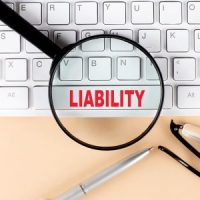Possible Drug-Related Shooting at Seattle Apartment Complex

Investigators arrived at a senior living apartment complex shortly after midnight one morning to find a man who had been shot dead lying in one of the units.
The incident occurred at a Third Avenue apartment complex, near the Blanchard Street intersection. Residents were surprised, but not completely shocked. “Police come here a lot because there’s a lot of people that hang out here that do drugs,” one neighbor remarked.
Responding officers attempted to give the man life-saving measures until crews with the Seattle Fire Department arrived. However, the Seattle Police Department said the man was pronounced dead at the scene.
Duty of Care
Apartment owners have a duty of care to keep common areas reasonably safe. This duty includes a responsibility to provide adequate security.
Usually, this duty is non delegable. The fault might lie with a security or management company that dropped the ball. But a Seattle apartment & rental home lawyer can still hold the owner liable for damages.
These damages usually include compensation for economic losses, such as medical bills, and noneconomic losses, such as pain and suffering.
Owners have a duty of reasonable care if the victim was an invitee (permission to be on the property and financial or nonfinancial benefit to the owner). A lesser duty applies if the victim was a licensee (permission but no benefit) or a trespasser (no permission and no benefit).
Sometimes, these categories overlap. For example, if Julie doesn’t pay her rent on time or violates an apartment rule, she moves from an invitee to a trespasser.
Police found the dead victim in an apartment unit, so he was probably a resident. But if he wasn’t a resident, one of the lower duties may apply.
Knowledge of Hazard
Owners are responsible for damages if a Seattle personal injury lawyer proves, by a preponderance of the evidence, that the owner knew about, or should have known about, the injury-causing hazard.
A preponderance of evidence means more likely than not. Imagine two stacks of paper side by side. Each stack has the same number of sheets. Then, a person moves a single sheet from the right to the left, making the left-hand stack higher than the right-hand stack. That’s a picture of a preponderance of the evidence. A little proof makes a big difference.
In negligent security cases, security studies are the most common direct proof of actual knowledge. Prior similar events of the neighborhood’s crime rate could prove this point as well. This evidence bleeds into foreseeability, a concept that we’ll discuss below.
The time-notice rule usually controls constructive knowledge (should have known) issues. That’s especially true if the hazard was a passive security issue, like a:
- Broken gate,
- Burned-out light,
- Malfunctioning camera, or
- Broken lock.
Owners have a duty to inspect property and ensure it’s secure. So, the longer a hazard existed, the more likely it is that the owner should have known about it, and should have done something about it.
Foreseeability of Injury
Shootings, assaults, and other such incidents are third-party crimes. Under Washington law, owners are only responsible for third-party crimes if the injury was foreseeable (possible). Evidence of foreseeability includes:
- Neighborhood’s crime rate (e.g. drug and other illegal activity),
- Type of business (apartments need tighter security than flower shops),
- Location (a business near a busy street is more vulnerable than a business on a cul-de-sac), and
- Prior similar incidents in the area.
The same burden of proof (a preponderance of the evidence) applies in foreseeability determinations.
Work With a Determined King County Lawyer
Property owners have safety responsibilities. For a free consultation with an experienced personal injury lawyer in Seattle, contact the Emerald Law Group. We do not charge upfront legal fees in these matters.
Source:
kiro7.com/news/local/man-found-fatally-shot-inside-belltown-apartment/ZJGZAYMWEZFVHPPMKT7CE32ZUA/
